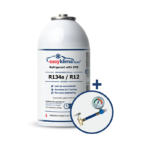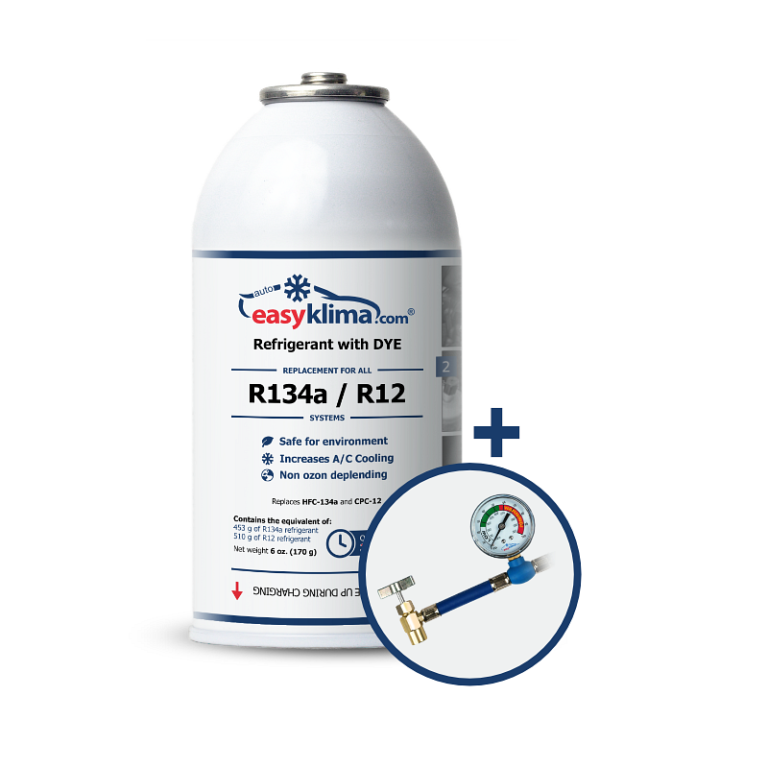Tattoo laser removal is an intricate and precise procedure aimed at eliminating unwanted tattoos from the skin’s surface. This advanced technique employs the use of highly focused laser beams to break down the tattoo pigments into smaller particles, enabling the body’s natural processes to gradually eliminate them. This article delves into the intricacies of the tattoo laser removal process, shedding light on the various stages involved and the key factors contributing to its efficacy. The initial step in the tattoo laser removal process involves a thorough assessment of the tattoo itself. The tattoo’s size, color, depth, and location are carefully evaluated to determine the appropriate laser settings and treatment plan.
Different tattoo pigments respond differently to specific laser wavelengths, so tailoring the treatment parameters to the tattoo’s characteristics is essential for optimal results. During the actual procedure, a qualified dermatologist or laser technician uses a specialized laser device to emit intense pulses of light onto the tattooed area. The laser emits light in short bursts, targeting the tattoo pigments while minimizing damage to the surrounding skin. The laser’s energy selectively penetrates the skin, heating and shattering the tattoo pigments into microscopic fragments. The choice of laser used for tattoo removal depends on the colors present in the tattoo. Different lasers emit specific wavelengths of light, each effectively targeting certain colors. For instance, Q-switched lasers are commonly used to remove dark pigments such as black or dark blue, while other lasers like the ruby or alexandrite lasers are more suitable for treating red, orange, or yellow pigments. Additionally, the advancements in laser technology have introduced picosecond lasers, which deliver even shorter pulses of energy for more precise and efficient pigment fragmentation. The fragmented tattoo pigments are then processed by the body’s immune system, gradually eliminating them over time.
The immune cells recognize the smaller ink particles as foreign substances and work to remove them from the skin. The lymphatic system plays a vital role in this process, carrying away the broken-down pigments and facilitating their elimination through natural bodily processes. It is important to note that tattoo laser removal is typically performed in multiple sessions, spaced several weeks apart. This allows the skin to heal and the immune system to effectively process and remove the fragmented pigments. The number of sessions required depends on various factors, including the tattoo’s size, complexity, depth, and the individual’s skin type and response to treatment. Patience and adherence to the prescribed treatment plan are key for achieving the desired results. Following each laser treatment session, proper aftercare is crucial to ensure optimal healing and minimize the risk of complications. This may involve applying topical creams, avoiding direct sunlight, refraining from picking or scratching the treated area, and following any additional instructions provided by the healthcare professional. In conclusion, understanding the process of tattoo laser removal entails recognizing the meticulous assessment and tailored treatment approach, the selective laser targeting of tattoo pigments, and the subsequent immune response leading to pigment elimination.
With advancements in laser technology and the expertise of qualified professionals, tattoo laser removal has become a reliable and effective method for gradually fading or completely removing unwanted tattoos. It is essential to consult with a skilled practitioner to determine the most suitable treatment plan based on individual tattoo characteristics, ensuring a successful and satisfactory outcome.

What are the different types of lasers used in tattoo removal?
Tattoo removal has become an increasingly popular procedure for individuals who wish to eliminate unwanted tattoos. One of the most effective methods employed in tattoo removal is the use of lasers. Laser technology has revolutionized the field of tattoo removal, offering a safe and efficient way to fade or completely remove tattoos. In this article, we will delve into the various types of lasers used in the tattoo removal process, shedding light on their distinct characteristics and advantages.
- Q-Switched Nd:YAG Laser:
The Q-Switched Nd:YAG (Neodymium-doped Yttrium Aluminum Garnet) laser is one of the most commonly used lasers for tattoo removal. It emits a high-intensity beam of light at a specific wavelength, targeting the pigments embedded in the skin. The laser energy breaks down the tattoo ink into smaller particles, allowing the body’s immune system to gradually eliminate them. This laser is particularly effective for removing dark-colored tattoos, such as black and blue, as it is well-absorbed by dark pigments. - Q-Switched Alexandrite Laser:
The Q-Switched Alexandrite laser is another popular choice for tattoo removal. This laser operates at a longer wavelength than the Nd:YAG laser, allowing it to target a wider range of tattoo pigments. It is especially effective for removing green and blue-green pigments commonly found in tattoos. The Q-Switched Alexandrite laser produces short bursts of high-energy light, shattering the tattoo ink without damaging the surrounding skin. - Picosecond Laser:
The Picosecond laser is a relatively newer addition to the tattoo removal arsenal. It emits ultra-short pulses of laser energy, measured in picoseconds (trillionths of a second). These extremely short pulses deliver energy to the tattoo ink in shorter intervals, resulting in more effective ink fragmentation. The Picosecond laser is highly versatile and can target a broad spectrum of tattoo pigments, including stubborn and resistant colors like red, orange, and yellow. It is also known to produce fewer side effects and requires fewer treatment sessions compared to traditional lasers. - Ruby Laser:
Although less commonly used today, the Ruby laser was one of the earliest lasers employed for tattoo removal. It operates at a red wavelength and primarily targets blue and black pigments. The Ruby laser produces a longer pulse duration than other lasers, making it less ideal for intricate tattoos and those with a variety of colors. However, it can still be effective for certain tattoo removal cases, and its use is determined by the specific needs and characteristics of the tattoo being treated. - Fractional Laser:
In some instances, tattoo removal may require a more targeted approach to minimize potential side effects. This is where fractional lasers come into play. Fractional lasers emit a grid-like pattern of laser beams, treating only a fraction of the skin surface at a time. This technique allows for precise targeting of the tattoo pigments while leaving surrounding tissues largely unaffected. Fractional lasers can be used in combination with other lasers to optimize tattoo removal outcomes, particularly for larger or more complex tattoos.

Is tattoo laser removal safe? Understanding the risks and precautions
Tattoo laser removal is a widely used procedure for eliminating unwanted tattoos. While it is generally considered safe and effective, understanding the risks and taking appropriate precautions is crucial. In this article, we delve into the topic of tattoo laser removal, discussing the safety concerns, potential risks, and essential precautions associated with the process.
- The Mechanism of Tattoo Laser Removal:
Tattoo laser removal employs laser technology to break down the ink particles in the skin. High-intensity laser beams target the tattooed area, fragmenting the pigment into smaller particles. These fragmented particles are then gradually eliminated by the body’s immune system over time. The procedure requires multiple sessions to achieve satisfactory results. - Safety of Tattoo Laser Removal:
When performed by a qualified professional, tattoo laser removal is generally considered safe. However, it’s important to note that no medical procedure is entirely risk-free. Potential risks and complications associated with tattoo laser removal include:

How many sessions of laser tattoo removal are typically required?
Laser tattoo removal has emerged as one of the most effective and popular methods for eliminating unwanted tattoos. However, the number of sessions required for complete removal depends on several factors. It is essential to understand these factors and their impact on the tattoo removal process. The number of sessions needed for laser tattoo removal primarily depends on the size, color, location, and depth of the tattoo, as well as the individual’s skin type and the tattoo artist’s technique. Additionally, the type of laser used and the specific wavelengths it emits play a significant role in the efficiency of the removal process.
Generally, professional tattoos with darker pigments, such as black or blue, are easier to remove compared to tattoos with lighter colors, such as yellow or green. Darker pigments absorb laser energy more effectively, allowing for better fragmentation and clearance. Conversely, lighter colors may require additional sessions for satisfactory results. The size of the tattoo is also a crucial factor. Larger tattoos require more sessions since the laser must target each area individually to ensure complete removal. Smaller tattoos, on the other hand, may need fewer sessions due to their limited surface area. Moreover, the location of the tattoo on the body can influence the number of sessions required. Tattoos located farther away from the heart, like those on the extremities, may take longer to fade because blood circulation in those areas is comparatively lower. Areas with greater blood flow, such as the torso, tend to respond better to laser treatment. The depth of the tattoo also affects the number of sessions needed. Deeply embedded ink particles require more laser energy to break apart and eliminate. Shallow tattoos closer to the surface of the skin generally respond more quickly to treatment. Skin type is another crucial factor in tattoo removal. Different skin types react differently to laser treatment, with some individuals experiencing more rapid fading than others. Lighter skin tones generally respond better to laser tattoo removal, as darker skin can be more prone to pigment-related complications. However, advancements in laser technology have made it possible to achieve successful results across a wide range of skin types. The type of laser used for tattoo removal also impacts the number of sessions required.
Q-switched lasers, such as the Nd:YAG laser, are commonly employed for this purpose. These lasers emit high-intensity light pulses in short durations, allowing for effective targeting of tattoo pigments while minimizing damage to the surrounding skin. The number of sessions needed can vary depending on the laser’s power, pulse duration, and wavelength settings. In most cases, multiple sessions are required for complete tattoo removal. On average, a professional tattoo may require between 5 to 15 sessions, spaced approximately 6 to 8 weeks apart, to achieve optimal results. However, it’s important to note that individual responses to laser treatment can vary, and some tattoos may require additional sessions. Each laser tattoo removal session aims to break down the tattoo pigments into smaller fragments, which are then gradually eliminated by the body’s immune system. Over time, with successive treatments, the tattoo fades and becomes less visible. It is crucial to consult with a qualified dermatologist or laser tattoo removal specialist to assess your specific tattoo and receive personalized advice on the estimated number of sessions required.
They will consider various factors to develop a treatment plan tailored to your unique situation, optimizing the tattoo removal process and ensuring the best possible outcome. In conclusion, the number of sessions needed for laser tattoo removal varies based on the size, color, location, depth of the tattoo, individual skin type, and the type of laser used. While multiple sessions are typically required, consulting with a professional will provide a more accurate estimation for your specific case. Laser tattoo removal offers a reliable and efficient method to eliminate unwanted tattoos, allowing individuals to achieve the desired outcome and regain control Laser tattoo removal offers a reliable and efficient method to eliminate unwanted tattoos, allowing individuals to achieve the desired outcome and regain control over their appearance. By understanding the factors influencing the number of sessions required, individuals can approach the tattoo removal process with realistic expectations, knowing that their commitment and patience will ultimately lead to successful results.






















+ There are no comments
Add yours